What Is a Variable Capacitor? Types, Working Principle, Advantages & Applications Explained
2025-04-01
5895
Catalog
What Is a Variable Capacitor?

A variable capacitor is a type of capacitor whose capacitance value can be adjusted either manually or electronically. Unlike fixed capacitors, variable capacitors offer tuning flexibility, making them essential components in applications such as RF (Radio Frequency) circuits, impedance matching networks, and resonant circuits. These components are particularly useful in systems that require continuous or stepwise tuning.
How Does a Variable Capacitor Work?
Fundamentally, a variable capacitor functions by changing the physical overlap or distance between conductive plates. Typically, it consists of two sets of metal plates: one fixed and one movable. By rotating the movable plates, the overlapping area with the fixed plates is altered, which changes the capacitance.
This adjustment mechanism allows for a linear variation of capacitance within a specific range, enabling precise tuning of circuit parameters.
In addition to altering the overlapping area, changing the distance between the plates also impacts capacitance. Increasing the distance reduces the capacitance, while decreasing it increases the capacitance. This feature allows for fine-tuning the capacitance to meet specific circuit requirements.
Types of Variable Capacitors
Variable capacitors are classified based on the dielectric material used. The two main types are air dielectric capacitors and solid dielectric capacitors.
Air Dielectric Variable Capacitors

Air capacitors use air as the dielectric material. While they can be designed as fixed or variable, variable types are more commonly used due to their simplicity. Fixed air capacitors are less popular since better alternatives are often available.
Typically, air capacitors are made of two sets of semi-circular metal plates separated by air. One set is stationary, and the other is attached to a rotating shaft. When the plates overlap more, capacitance is at its maximum; when they barely overlap, capacitance is at its minimum. A gear reduction mechanism is often implemented to enhance precision and control during tuning.
Air capacitors generally have low capacitance values, ranging from 100 pF to 1 nF, and operate within voltage ranges of 10V to 1000V. Because air has a relatively low dielectric breakdown voltage, there is a risk of internal breakdown, which can lead to failure. Despite their lower capacitance, these capacitors play a crucial role in ensuring the proper function of many electronic systems due to their design and operation.
Solid Dielectric Variable Capacitors

Solid dielectric variable capacitors use materials such as mica sheets or plastic films between the fixed and movable metal plates. These components are typically enclosed in transparent plastic housings.
There are several structural types of solid dielectric capacitors:
Single-seal
Double-seal (where the rotor, stator, and dielectric components rotate coaxially)
Quad-seal with four sets of rotors, stators, and dielectric layers
Using solid materials as the dielectric makes these capacitors more stable and durable compared to conventional types. They are widely used in a variety of electronic devices and systems. Each variant has unique characteristics and functions, and selection depends on the specific requirements of the application.
Advantages and Disadvantages of Variable Capacitors
|
Feature |
Advantages |
Disadvantages |
|
Adjustable Capacitance |
Enables frequency tuning and filter
adjustments |
Inaccurate adjustments may affect circuit
performance |
|
RF Compatibility |
Well-suited for RF, oscillator, and
antenna matching |
Parasitic inductance and ESR may affect
high-frequency use |
|
Diverse Designs |
Available in air and solid dielectric
types |
Solid types may be more complex and
costly to manufacture |
|
Versatile Usage |
Used in medical, communication, and audio
systems |
Not a substitute for fixed capacitors in
certain applications |
|
Easy to Tune |
Easily adjustable during maintenance or
field tuning |
Mechanical wear and oxidation can reduce
lifespan |
|
Reusability |
Can be reused in different circuits after
adjustment |
Dust and vibration may lead to poor
contact |
Applications of Variable Capacitors
Used in medical equipment such as MRI scanners to generate strong magnetic fields
Integrated into oscillator circuits for accurate frequency generation and stabilization
Applied in RF transmitters for fine-tuning circuits and matching power output to antennas for improved efficiency
Air variable capacitors are used in radio tuners to adjust frequency, allowing users to tune into different stations
In filter design, variable capacitors enable modification of frequency response characteristics, supporting low-pass, high-pass, or band-pass filter configurations
Variable capacitors are crucial in any circuit that requires adjustable capacitance. The most common types are air dielectric and solid dielectric capacitors. The choice between them depends on the application’s specific needs—frequency, voltage, size, and environmental conditions. Engineers evaluate these factors carefully to select the most suitable capacitor for the task.
If you have any questions, please feel free to contact us. ARIAT TECH will respond promptly.
Frequently Asked Questions [FAQ]
1: How does a variable capacitor work?
A variable capacitor adjusts its capacitance by changing the effective overlapping area or distance between its internal plates. A typical mechanical variable capacitor includes fixed plates (stators) and movable plates (rotors). By rotating the rotor, the overlap with the stator changes, which adjusts the capacitance.
2: How do I choose the right variable capacitor for a specific application?
Consider factors such as capacitance range, working voltage, frequency characteristics, and temperature stability. For example, in high-frequency circuits, capacitors with low equivalent series resistance (ESR) are preferred to maintain signal quality.
3: What design considerations are important when using variable capacitors?
Designers should account for parasitic inductance and capacitance, ensure the tuning range meets circuit requirements, and prioritize mechanical stability and durability in the overall design.
4: What are common failures in variable capacitors and how can they be resolved?
Common issues include poor contact, mechanical wear, and capacitance drift. Solutions involve cleaning contact points, inspecting mechanical parts for wear, and periodically calibrating the capacitance.
5: What are the pros and cons of variable capacitors compared to fixed capacitors?
Pros: Adjustable capacitance, ideal for frequency tuning applications
Cons: More complex mechanical structure, larger size, and potential parasitic effects that may affect high-frequency performance
 ABOUT US
Customer satisfaction every time. Mutual trust and common interests.
ABOUT US
Customer satisfaction every time. Mutual trust and common interests.
function test. The highest cost-effective products and the best service is our eternal commitment.
Hot Article
- Are CR2032 and CR2016 Interchangeable
- MOSFET: Definition, Working Principle and Selection
- Relay Installation and Testing, Interpretation of Relay Wiring Diagrams
- CR2016 vs. CR2032 What’s the difference
- NPN vs. PNP: What's the Difference?
- esp32 vs stm32: which microcontroller is better for you?
- LM358 Dual Operational Amplifier Comprehensive Guide: Pinouts, Circuit Diagrams, Equivalents, Useful Examples
- CR2032 VS DL2032 VS CR2025 Comparison Guide
- Understanding the Differences ESP32 and ESP32-S3 Technical and Performance Analysis
- Detailed Analysis of RC Series Circuit
 Variable Resistor Types--Potentiometer, Trimpot, Digital Potentiometer, Rheostat
Variable Resistor Types--Potentiometer, Trimpot, Digital Potentiometer, Rheostat
2023-11-09
 Relay Guide--Working Principle, Detection Method, Selection Tips
Relay Guide--Working Principle, Detection Method, Selection Tips
2023-11-09
Hot Part Number
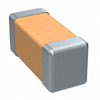 C0402C0G1C4R3C
C0402C0G1C4R3C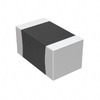 CC0603KRX5R6BB224
CC0603KRX5R6BB224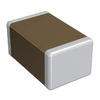 GRM21AR72D152KW01D
GRM21AR72D152KW01D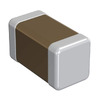 GRM022R61A152KE19L
GRM022R61A152KE19L 06031A100FAT4A
06031A100FAT4A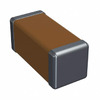 1808CC102ZAT1A
1808CC102ZAT1A T494X156K050AT
T494X156K050AT S-35190A-T8T1G
S-35190A-T8T1G PIC16F684T-I/ML
PIC16F684T-I/ML NJM7924FA
NJM7924FA
- VI-J6P-EX
- VI-BW3-IV
- VE-2T1-MY
- LFXP6C-5F256C
- MPC8536AVTAQGA
- CY7C63310-SXC
- XR17D158IV-F
- TNY276PN
- HMC557ALC4
- STM32F103ZFH6TR
- LTC2852CMS#TRPBF
- LTC4360CSC8-1#TRMPBF
- FQP33N10
- MSP430F2252IDAR
- SN74LVC2G157YEAR
- TLV2462CDGKR
- 89HPES24T3G2ZABR
- ADP3180JRU-REEL
- DAC2900Y/250G4
- IDT70T3399S133BCG
- LMSP2PQD-G22TEMP
- MAX6709MUB
- MBM29DL34TF-70PFTN
- PF38F4050M0Y0Q0
- PF38F4060M0Y3DF
- S16-4148E3
- SI9712DY
- TC9012F-011
- TPA6047A4RHBRG4
- UCC2895PWR
- XC3S500E-4CFGG320D
- CIS14-0710-01
- HXB18T1G800AF-25D
- M66260FP
- MT1389VQU-QDTL
- TSS461C-TDRZ
- TSUM0387MT9-1
- LC87F5CC8A-F57T0-E
- M30622MP-166FP